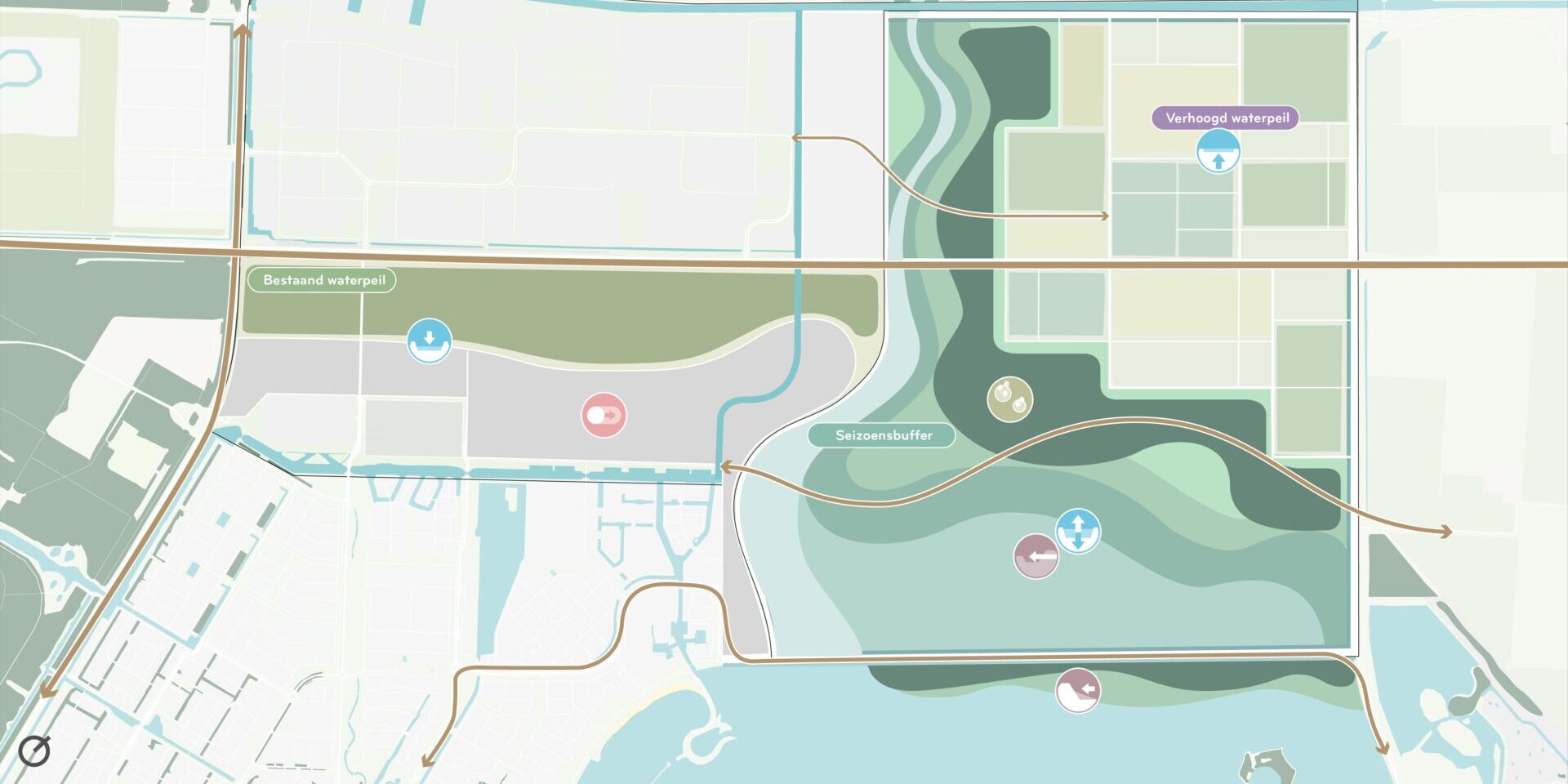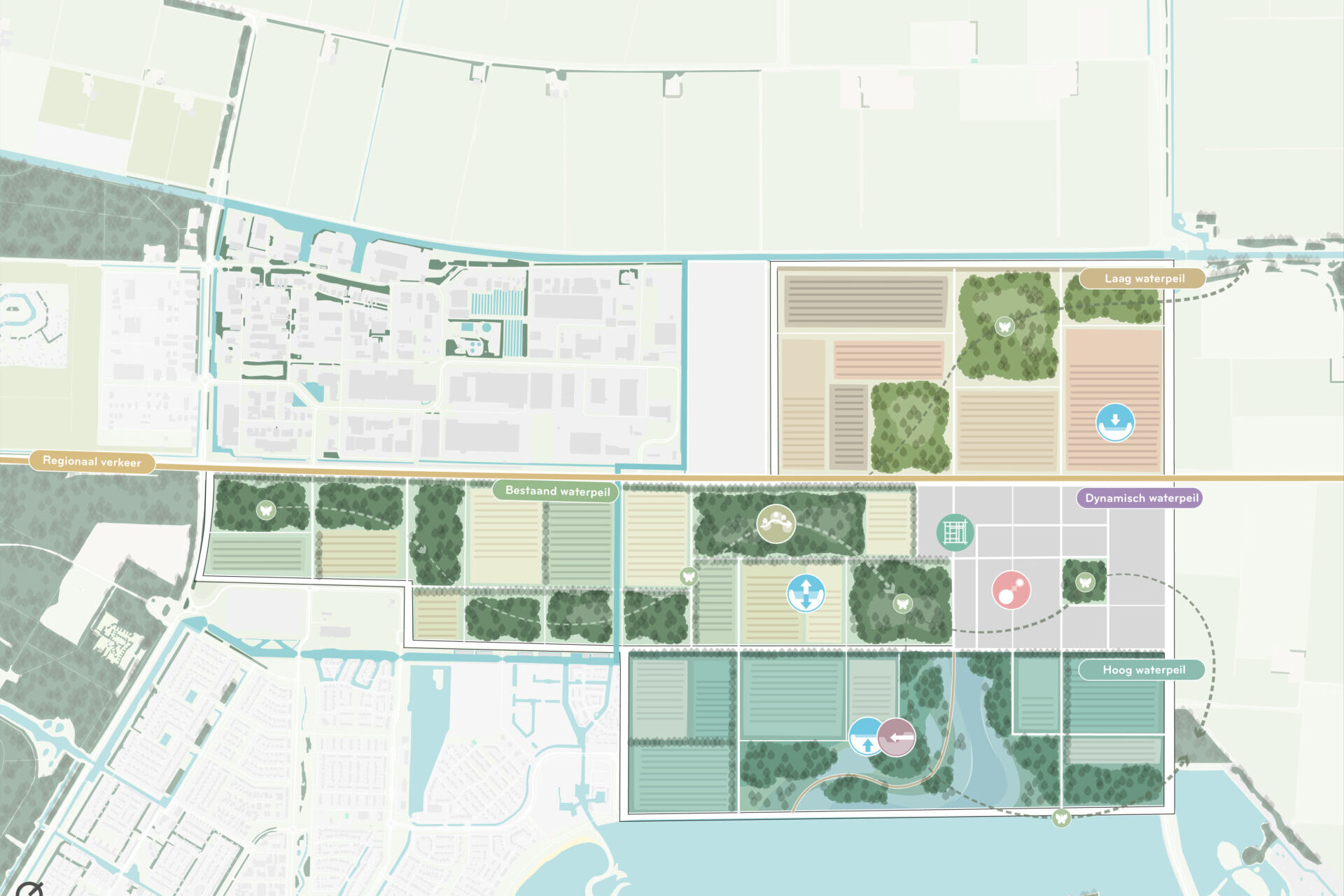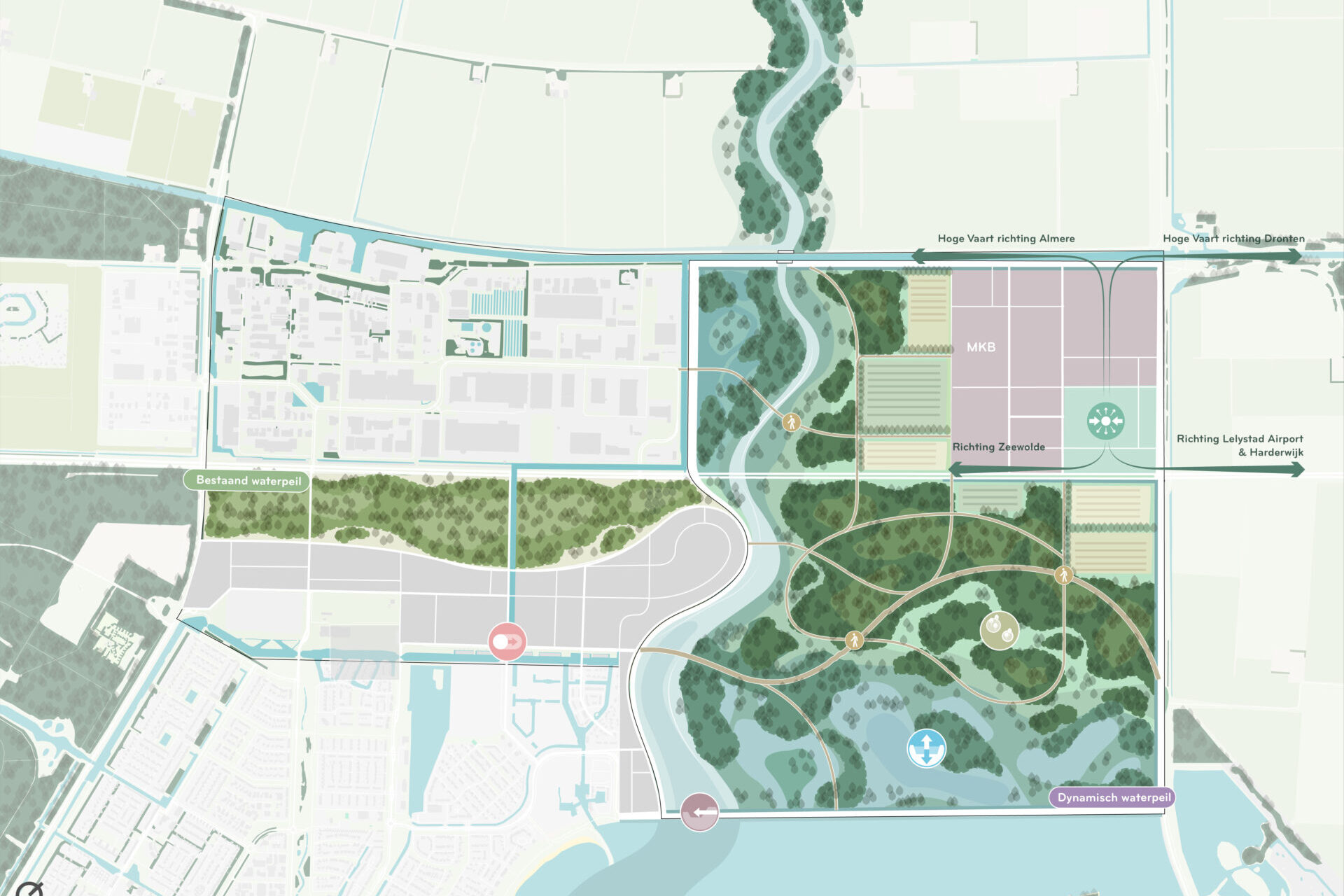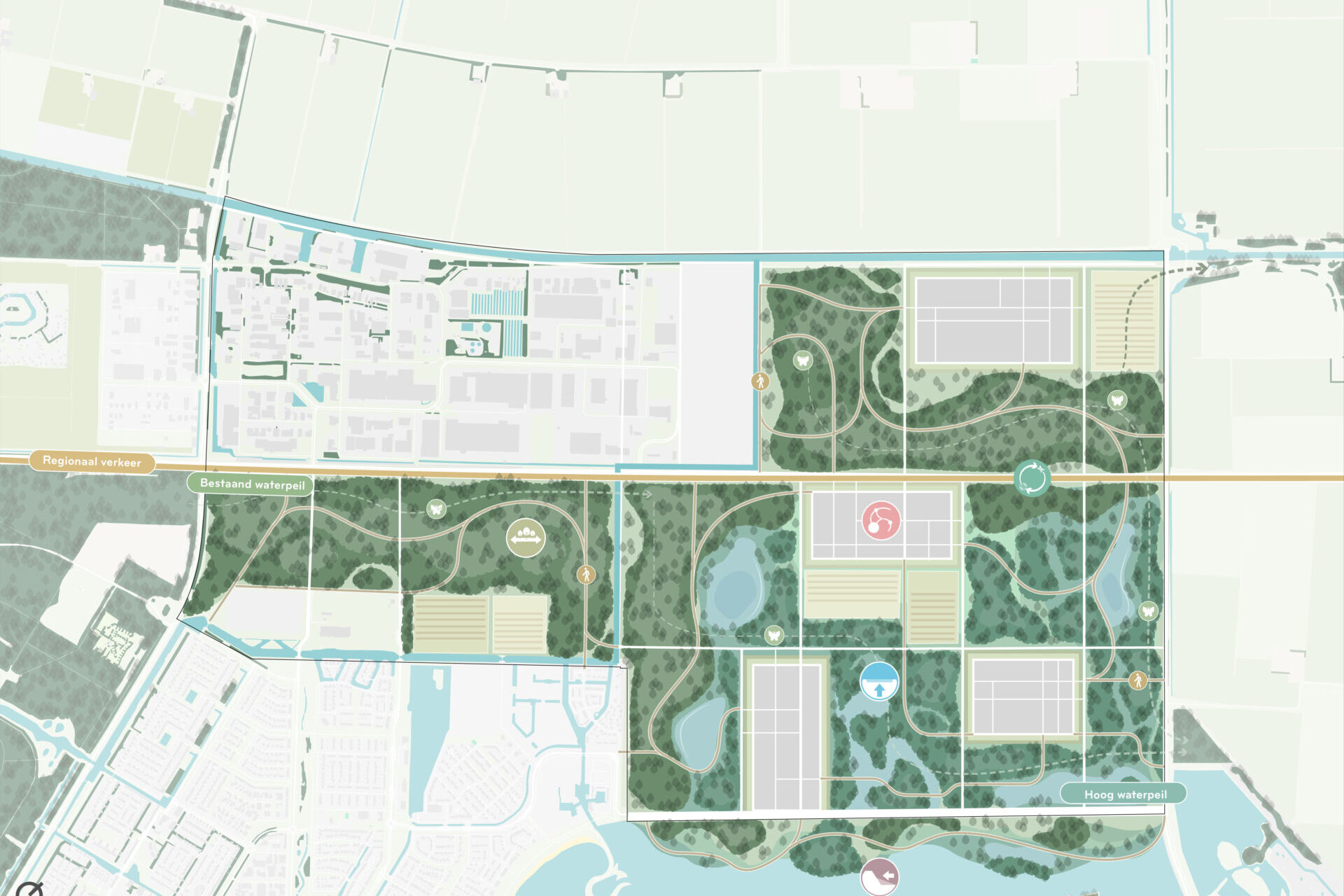
Water and soil as guiding principles in Zeewolde

With climate challenges becoming more visible and extreme each year, a landscape-based approach is playing an increasingly central role in long-term spatial planning. In collaboration with the municipality of Zeewolde and KIEN ontwerp, we applied “water en bodem” principles (lit. “water and soil” – one of the key climate adaptation principles endorsed by the Dutch government) as guiding factors to lay the foundation for a design-led study of the Ossenkampweg agricultural area in Zeewolde.

We started by looking at the future possible challenges for this low-lying agricultural zone of approximately 10 km². By systematically organizing possible spatial interventions, we were able to develop three different scenarios that explore various integration of ecology, water management and the municipality’s urban growth ambitions.
The three scenarios each give the area a distinct direction:
Each scenario was further elaborated into a climate-adaptive design featuring adjusted water levels, new waterways, shaded routes, and space for new developments. Additionally, they were further developed to clarify the spatial synergies and conflicts within the area.

Zeewolde embraces a landscape-led approach, making the project a strong example of integrated and well-considered spatial planning. We are proud to have been able to shape this together with the municipality. As a final step, we have developed an illustrative overview to support the conversation about the area’s future.









